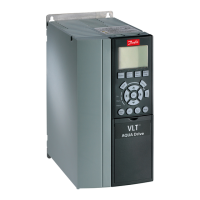3.6.6 PID 23
3.6.6.1 Speed PID Control 23
3.6.6.2 Tuning PID Speed Control 25
3.6.6.3 Process PID Control 26
3.6.6.4 Advanced PID Control 27
3.6.7 Internal Current Control in VVC
+
Mode 27
3.6.8 Local (Hand On) and Remote (Auto On) Control 27
3.7 Reference Handling
28
3.7.1 References 28
3.7.2 Reference Limits 30
3.7.3 Scaling of Preset References and Bus References 31
3.7.4 Scaling of Analog and Pulse References and Feedback 31
3.7.5 Dead Band Around Zero 31
4 Product Features
36
4.1 Automated Operational Features
36
4.1.1 Short Circuit Protection 36
4.1.2 Overvoltage Protection 36
4.1.3 Missing Motor Phase Detection 37
4.1.4 Mains Phase Imbalance Detection 37
4.1.5 Switching on the Output 37
4.1.6 Overload Protection 37
4.1.7 Locked Rotor Protection 37
4.1.8 Automatic Derating 37
4.1.9 Automatic Energy Optimisation 37
4.1.10 Automatic Switching Frequency Modulation 37
4.1.11 Automatic Derating for High Carrier Frequency 38
4.1.12 Power Fluctuation Performance 38
4.1.13 Resonance Damping 38
4.1.14 Temperature-controlled Fans 38
4.1.15 EMC Compliance 38
4.1.16 Galvanic Isolation of Control Terminals 38
4.2 Custom Application Features
38
4.2.1 Automatic Motor Adaptation 38
4.2.2 Motor Thermal Protection 39
4.2.3 Mains Drop-out 39
4.2.4 Built-in PID Controller 39
4.2.5 Automatic Restart 40
4.2.6 Flying Start 40
4.2.7 Full Torque at Reduced Speed 40
4.2.8 Frequency Bypass 40
Contents
VLT
®
AutomationDrive FC 301/FC 302 Design Guide, 0.25-75 kW
2 MG33BF02 - Rev. 2013-12-20

